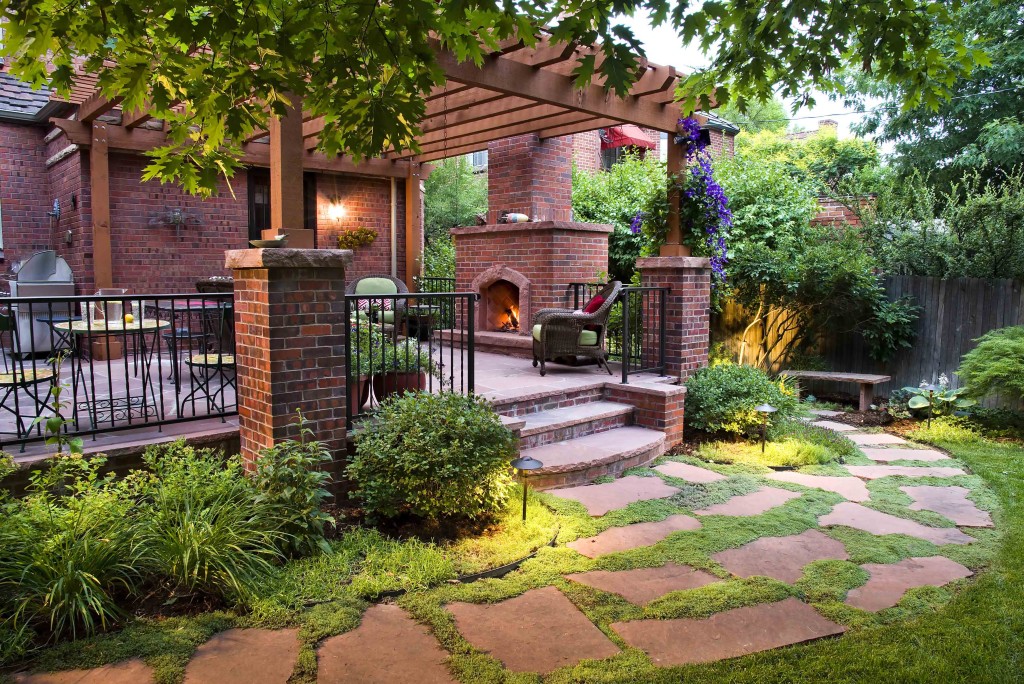Some Known Questions About Hilton Head Landscapes.
Some Known Questions About Hilton Head Landscapes.
Blog Article
Getting The Hilton Head Landscapes To Work
Table of ContentsSome Known Facts About Hilton Head Landscapes.The smart Trick of Hilton Head Landscapes That Nobody is Talking AboutThe Main Principles Of Hilton Head Landscapes The Hilton Head Landscapes PDFsThe Ultimate Guide To Hilton Head LandscapesThe Only Guide to Hilton Head LandscapesA Biased View of Hilton Head Landscapes
Line develops all forms and patterns and can be utilized in a range of methods in the landscape. Line in the landscape is created by the edge between two materials, the synopsis or shape of a type, or a long straight attribute. Lines are a powerful device for the designer since they can be used to develop an infinite selection of forms and forms, and they manage motion of the eye and the body.
.jpeg)
Lines can have several features, such as those explained listed below, but they normally offer various functions. Figure 1. Lines in the landscape - landscape design hilton head. The buildings of lines establish just how individuals reply to the landscape, both psychologically and literally. Straight lines are structural and strong; they produce an official character, are usually linked with an in proportion design, and lead the eye directly to a focal factor.
Hilton Head Landscapes for Dummies
Straight lines are usually found in hardscape sides and material. Rounded lines produce a casual, natural, relaxed personality that is connected extra with nature and asymmetrical equilibrium. Bent lines relocate the eye at a slower rate and add secret to the room by developing hidden views. Vertical lines move the eye up, making a room feel larger.
Upright lines in the landscape consist of high, slim plant material, such as trees, or tall frameworks, such as an arbor or a bird house on a pole. Horizontal lines move the eye along the ground aircraft and can make a room really feel bigger. Reduced lines are more subdued and produce a sensation of remainder or repose.
The Ultimate Guide To Hilton Head Landscapes
Reduced lines are produced by reduced garden walls, walkways, and short bushes. Lines are used to attract types on a strategy. In plan sight, they specify plant beds and hardscape locations. Lines are likewise created by the upright kinds of developed attributes and plant material. There are 3 primary line types that produce type in the landscape: bedlines, hardscape lines, and plant lines.
Bedlines attach plant material to your house and hardscape due to the fact that the eye adheres to the line, relocating the gaze with the landscape. Hardscape lines are developed by the side of the hardscape, which marks the constructed structure. Line can likewise be developed by long and slim materials, such as a fencing or wall.
Some Known Details About Hilton Head Landscapes
Form is found in both hardscape and plants, and it is generally the leading aesthetic aspect that spatially arranges the landscape and usually figures out the design of the garden. The type of frameworks, plant beds, and yard ornaments likewise identifies the overall type style of the garden. Formal, geometric kinds include circles, squares, and polygons.
Plants produce form in the garden via their describes or silhouettes, yet kind can likewise be defined by a void or negative area between plants - landscapers hilton head island (https://linktr.ee/h1tnhdlndscps). Circles can be cycles, or they can be split right into half circles or circle segments and integrated with lines to produce arcs and tangents
Hilton Head Landscapes Fundamentals Explained
Circles are a strong style kind because the eye is constantly attracted to the facility, which can be utilized to stress a focal factor or connect other forms. Round kinds in hardscape and yard panels.
The square form can likewise be fractional and pre-owned repeatedly to develop a grid pattern. Unlike circles, squares are stronger on the brink, which can be aligned or overlapped to develop unique patterns and more complicated kinds. Polygons are many-sided kinds with straight sides. Triangles, for example, are three-sided polygons.
Meandering lines frequently mimic the all-natural program of rivers or streams and can be called smooth lines with deeply curved undulations. Meandering lines (Figure 3) function well for paths, plant bedlines, and completely dry stream beds. Twisting lines can include interest and enigma to a garden by leading visitors around edges to find new sights and rooms.
Hilton Head Landscapes - The Facts

Number 5. Fragmented edges: tipping stones in path. Form is the most enduring top quality of a plant (landscape design hilton head). https://visual.ly/users/stevenagonzales/portfolio. Typical plant kinds are well established and standard, as form is the most consistent and identifiable attribute of plants. Kind can additionally be created through the massing of plants, where the overall mass produces a different type than a private plant.
An extremely different form must be made use of with careone or two work well as a focal point, however way too many create disorder. All-natural plant kinds, rather than over-trimmed kinds, ought to establish the bulk of the composition. The importance of total type is essentially based on the viewing perspectivethe type of a tree can appear quite different to an individual standing under the cover versus seeing the tree from a distance in an open field.
Getting My Hilton Head Landscapes To Work
Plant types likewise develop and define the gap or open spaces between the plants, producing either convex or scooped types in the gaps. High-arching tree branches generally develop a concave open area under the branches, and a rounded canopy with reduced branches loads the area to produce a convex kind outdoors space under the tree.

Report this page